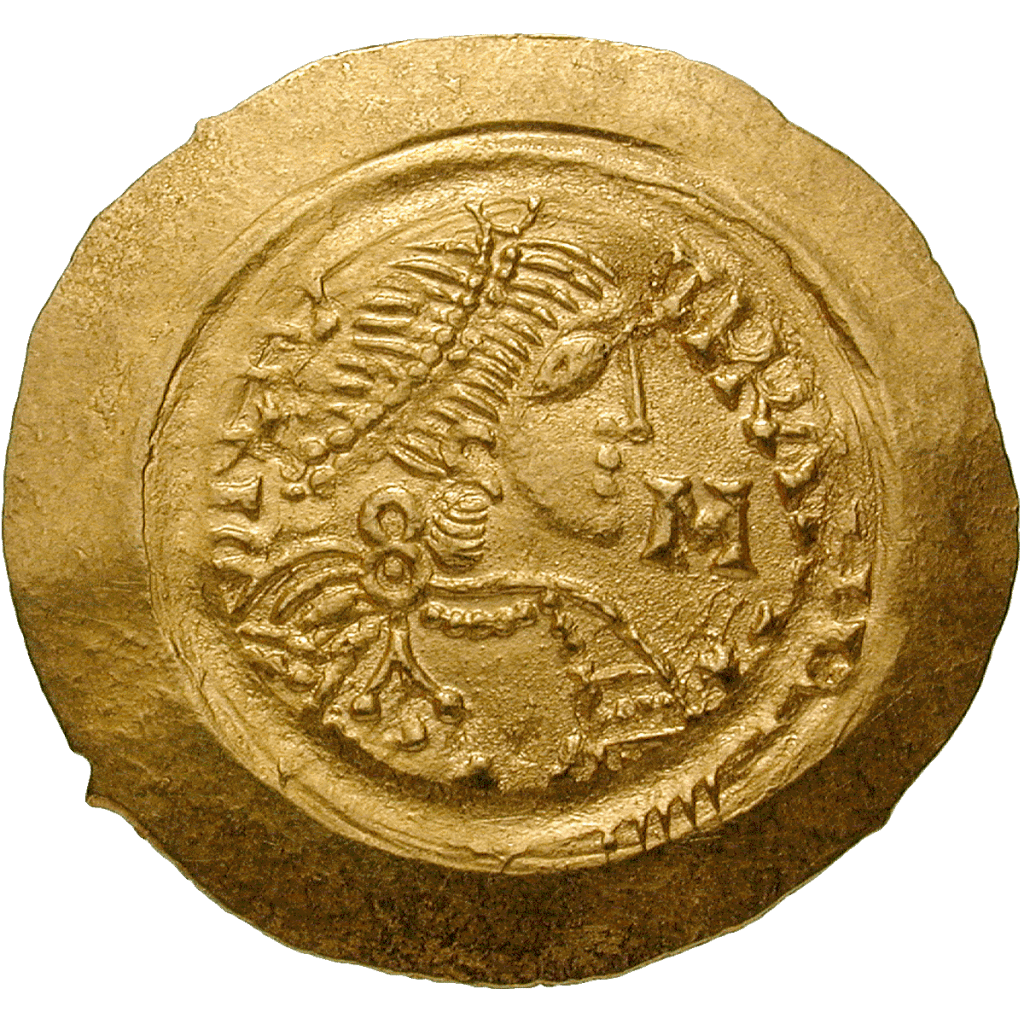One of our Visiting Fellows, Dr Christopher Heath’s scholarship engages with the early medieval worlds of Italy. He is about to publish his second monograph with Bloomsbury Academic, entitled The Age of Liutprand: Dynamics of Power in Eighth Century Italy. The book considers a pivotal ‘moment’ in the history of the Italian peninsula when the Lombard kingdom, based in Pavia, attained a hegemonic position throughout Italy.

Image: Liutprand on a gold tremissis
Christopher is also one of the co-ordinating editors of the Amsterdam University Press series, Italy in Late Antiquity and the Early Middle Ages (ILAEMA), which seeks to publish and promote Italian (and Anglophone) research on Italy from c.400 to c.1000. This series has already seen some notable works come to the attention of the historical community such as Dr Edoardo Manarini’s Struggles for Power in the Kingdom of Italy and the forthcoming volume on fluvial networks in Northen Italy by Dr Marco Panato, who has just commenced a post-doctoral project at the University of Nottingham.
Later this year, Christopher is orchestrating a series of panels at the vibrant IMC in Leeds which seeks to closely analyse specific incidents in early medieval history for what they reveal about the quotidian realities of the past. Here he sets out his research plans for the next year or so, as he prepares to write a short work for the Past Imperfect series with ARC Humanities Press entitled The Lombards in Italy.
The Lombards in Italy:
Writing a work of synthesis presents several challenges, both anticipated and unexpected. Having just completed a monograph which weighs in at roughly 100,000 words, the composition of a work in a series designed to be deliberately pithy is no easy challenge to resolve. The degree of simplification and deciding what should and should not be included is an ongoing problem. One does not want to reduce details to meaningless lists of disconnected analysis or leave the reader lost in a quagmire of assumptions. One approach, that I intend to adopt is to limit discussion of political events to a minimum and focus instead on slower, even deeper rhythms of life and experience that will encourage the reader to think of early medieval society as a series of interconnected spirals that interlink and connect, in the process revealing how societies function holistically.

Image: peacock in an 8th-century sculpture from Pavia
Of course, all historians tend to suffer the hubris that their period and their subject matter is ‘more’ significant than other times and places. It is no doubt the case that early medieval historians have some work to do to convince the interested public that events, protagonists and processes in the [comparatively] distant past are still vital and significant. ‘My’ key period of interest runs from c.500 to c.800, and within this time, I focus on the early eighth century in particular. Using centuries as building blocks of analysis and thinking also attracts dangers of salience, since they are entirely artificial human constructions and variable in cultural terms. That said, if one looks at the long-eighth century – say c.680 to c.820 – one may detect crucial changes that continue to influence the subsequent development of the Mediterranean and Atlantic worlds. This is a connected story where Islamicate cultures bridge the gap between Byzantium and the west and evidence an increasingly interconnected world. Whilst some of these fascinating developments will not make an explicit appearance in The Lombards in Italy, the project will act as a fulcrum to a more ambitious endeavour, linked into the IMC panels, that will re-consider the wider world of the eighth century.